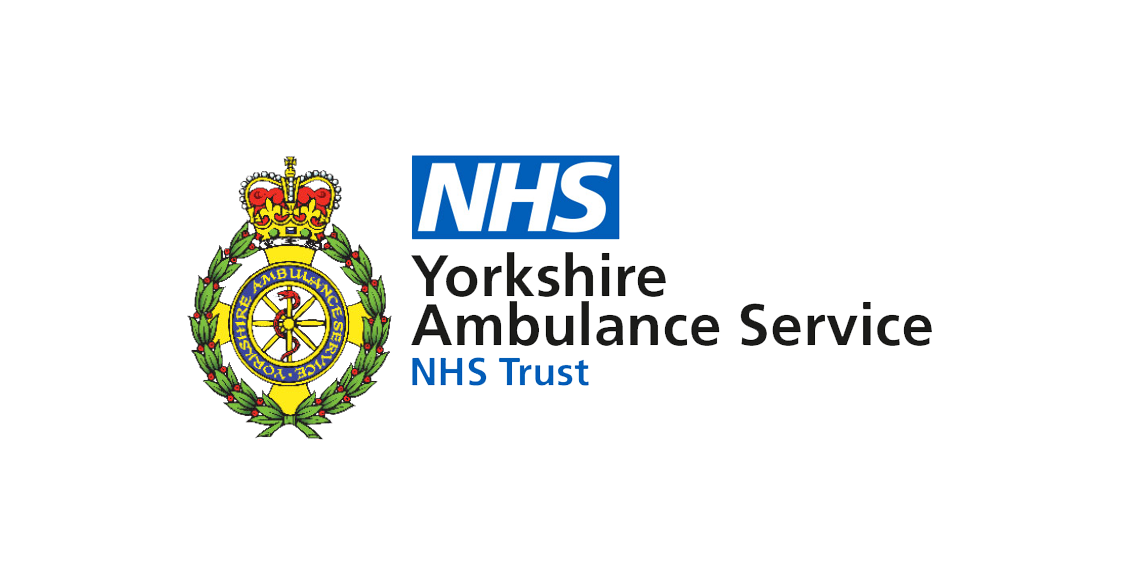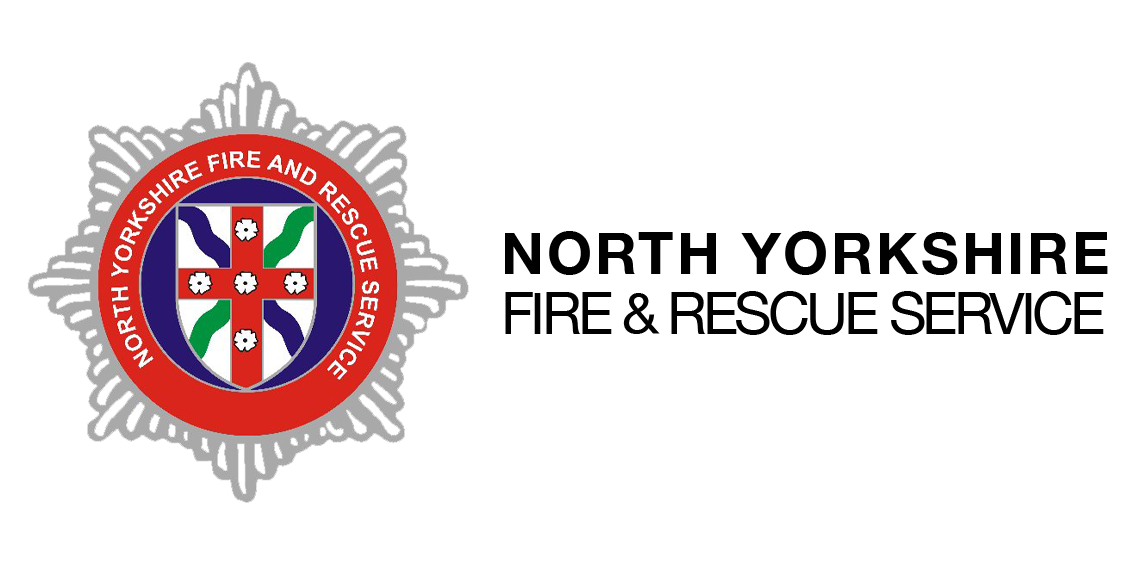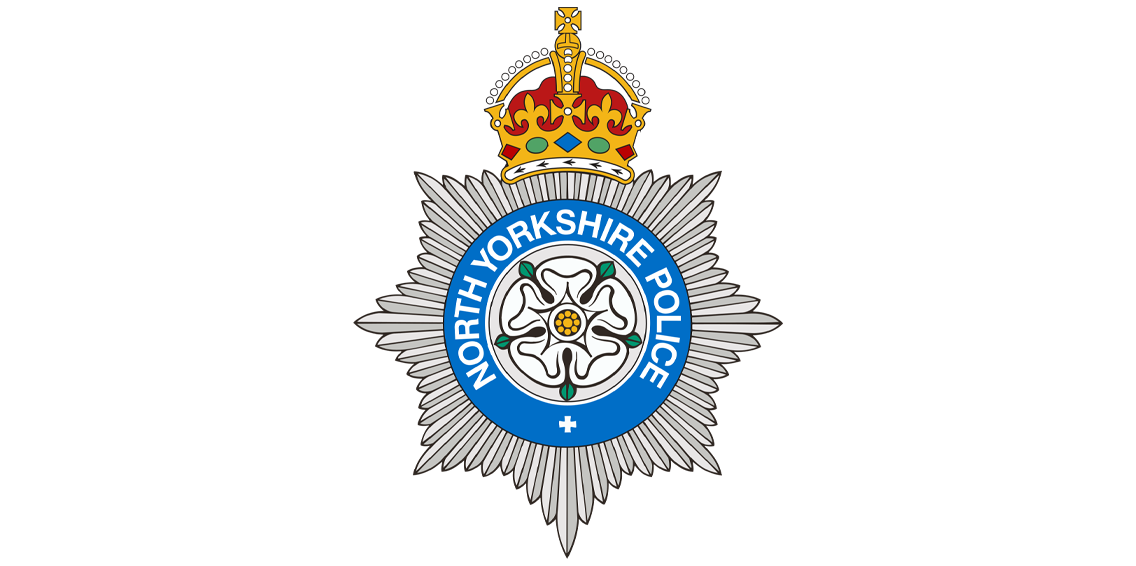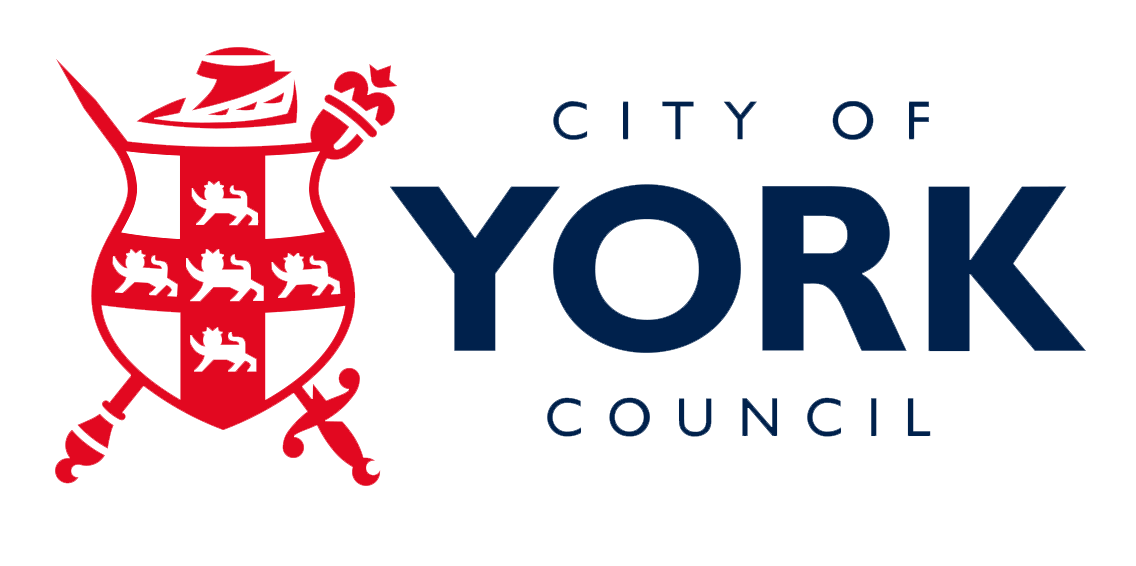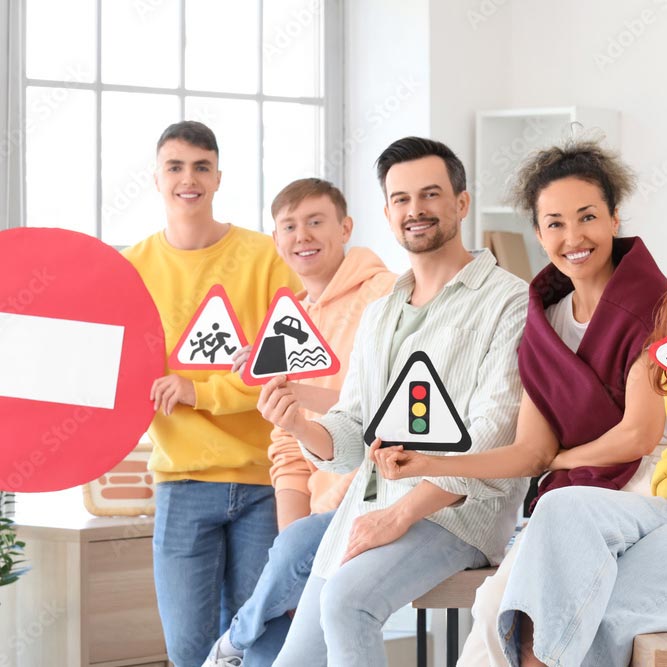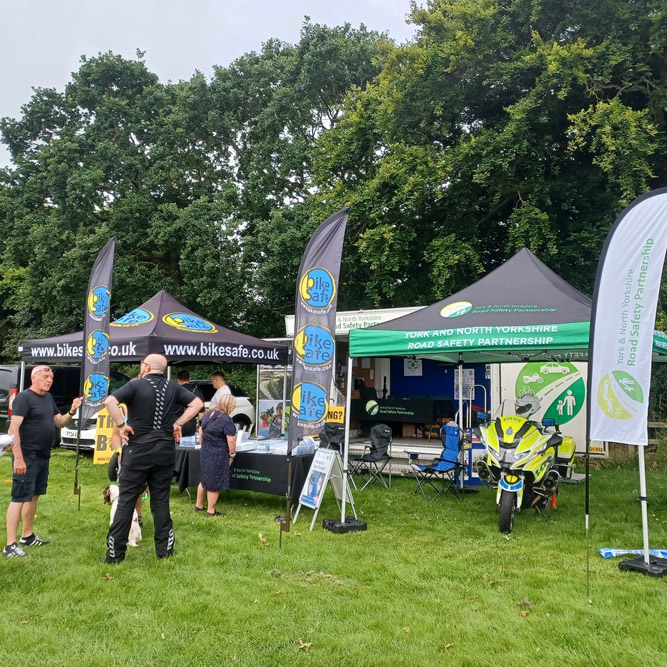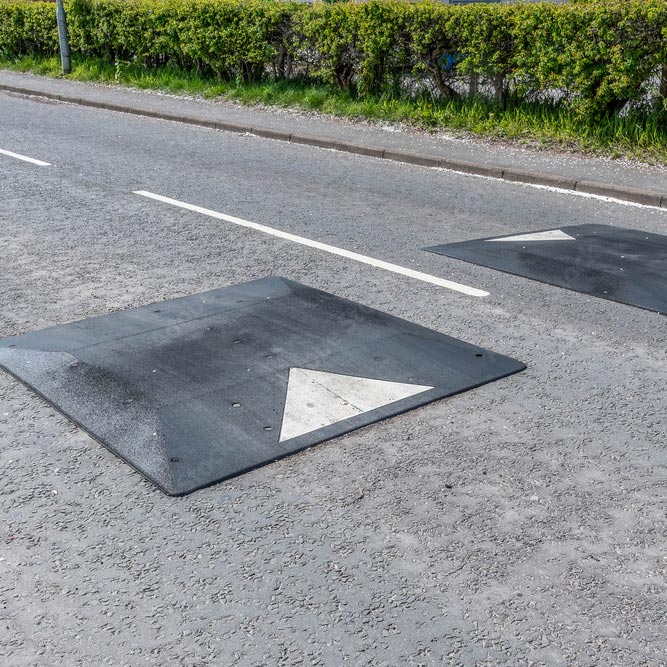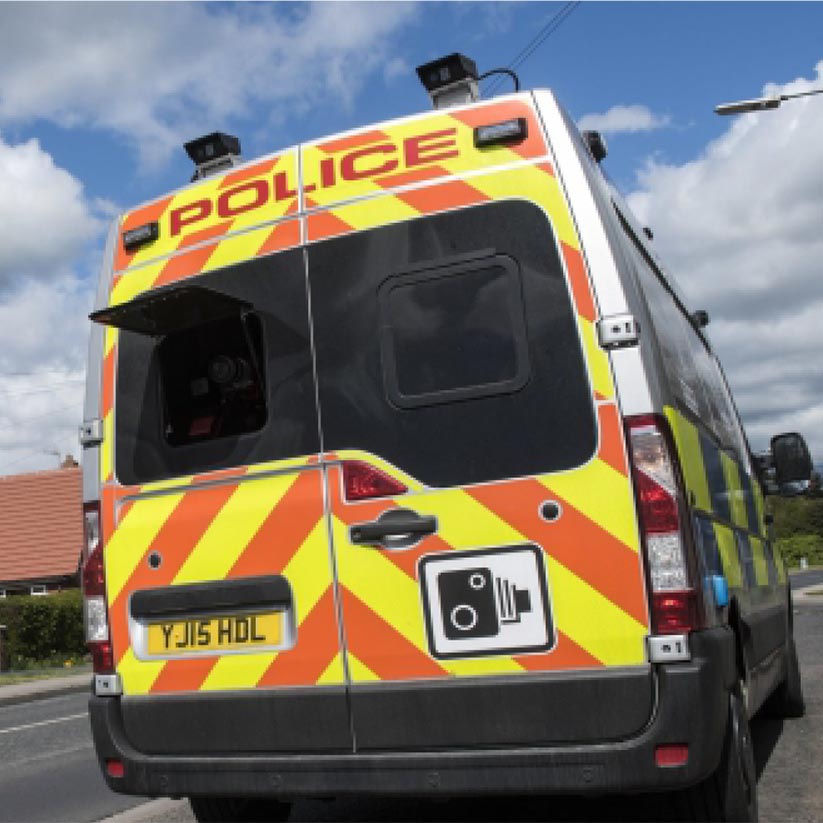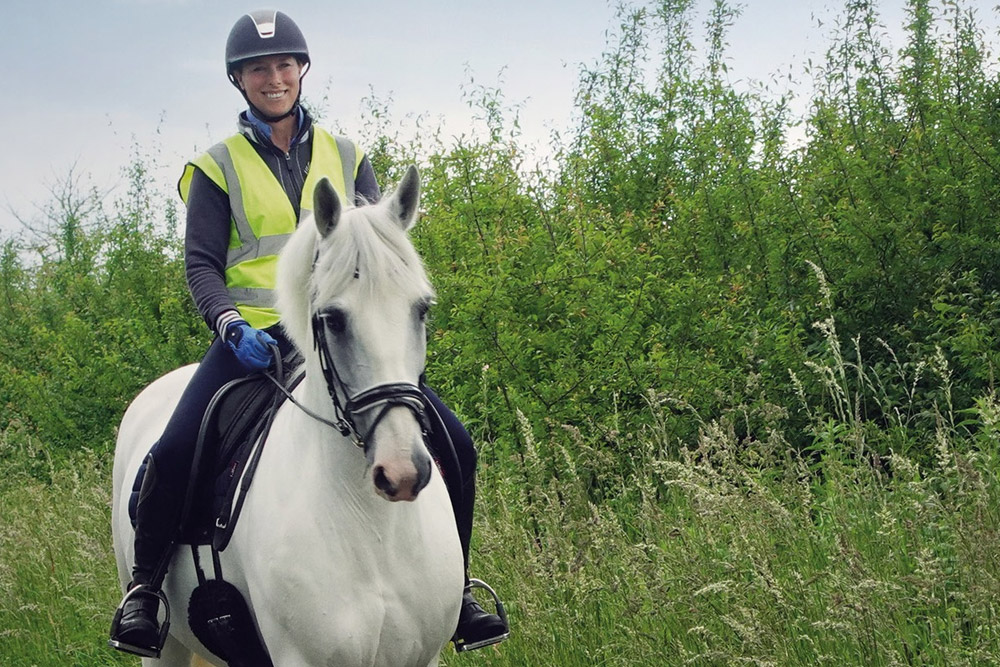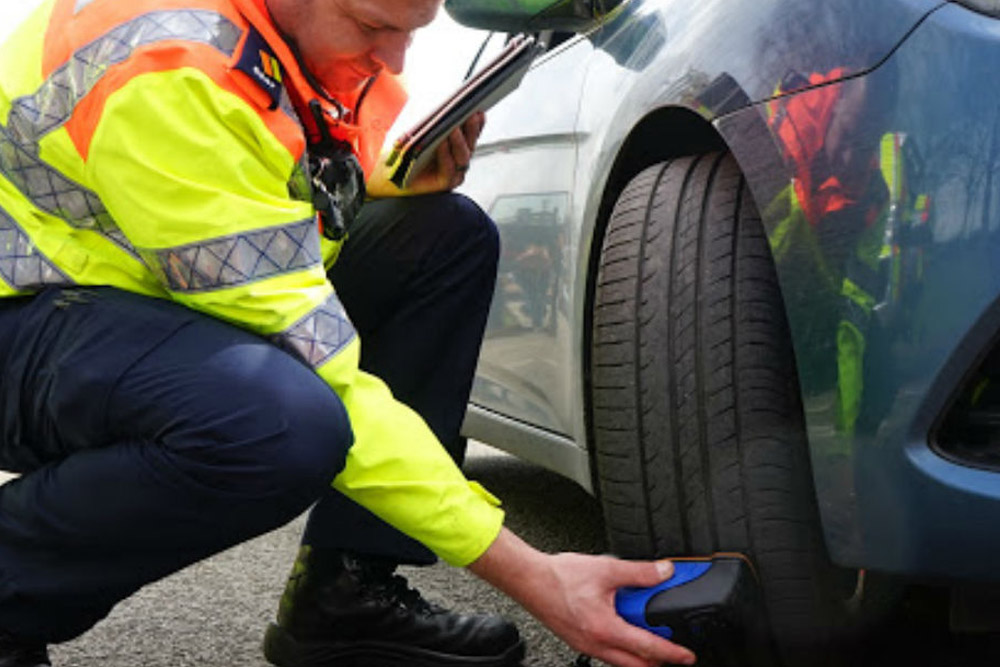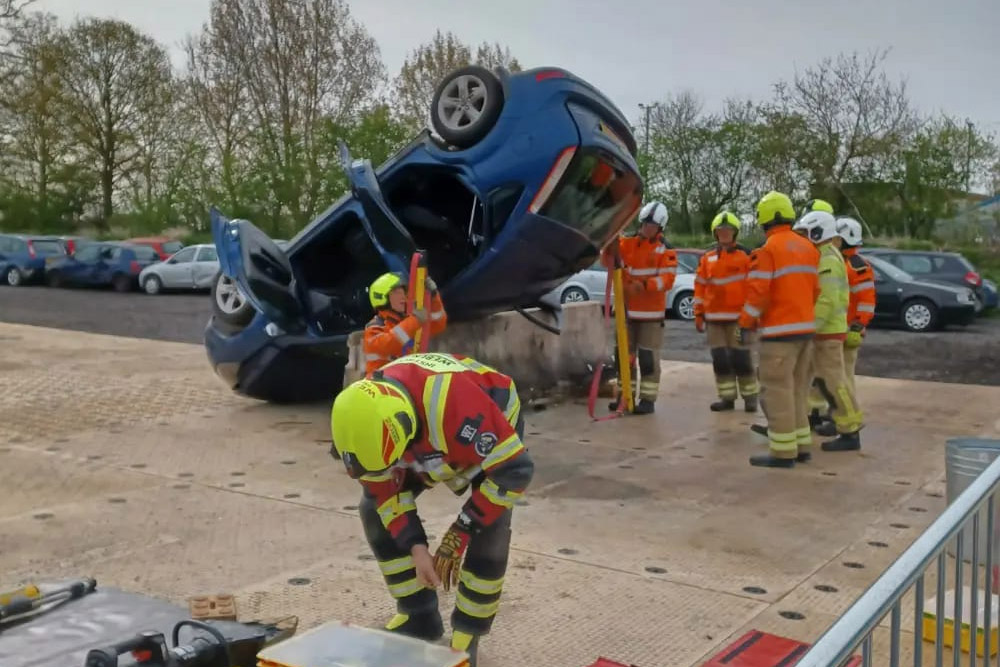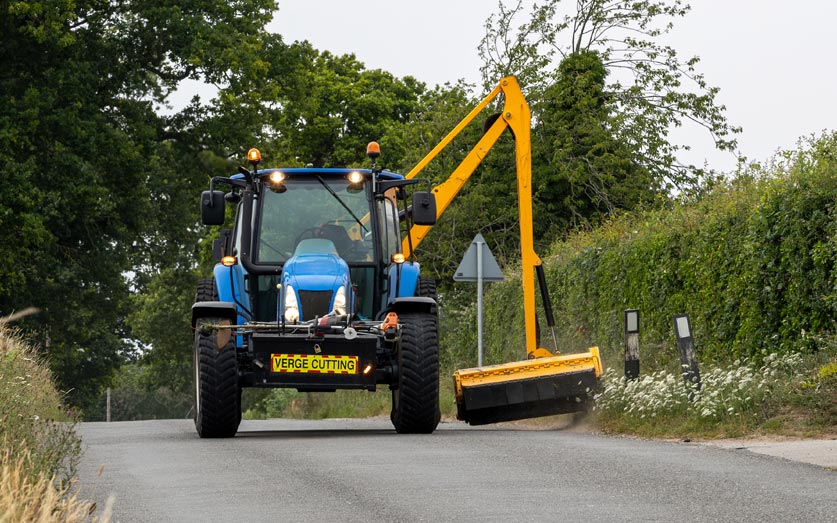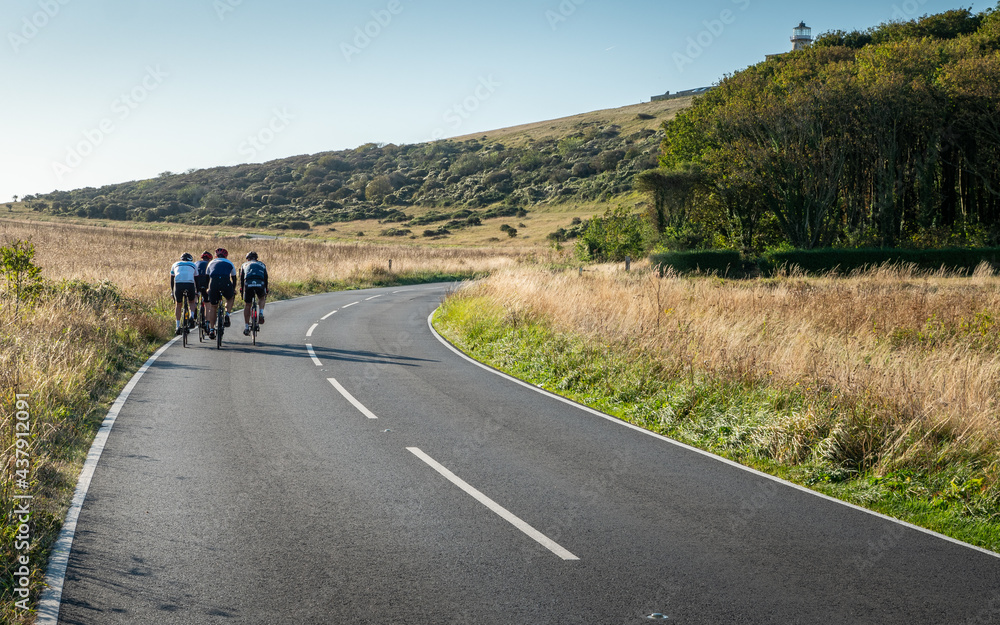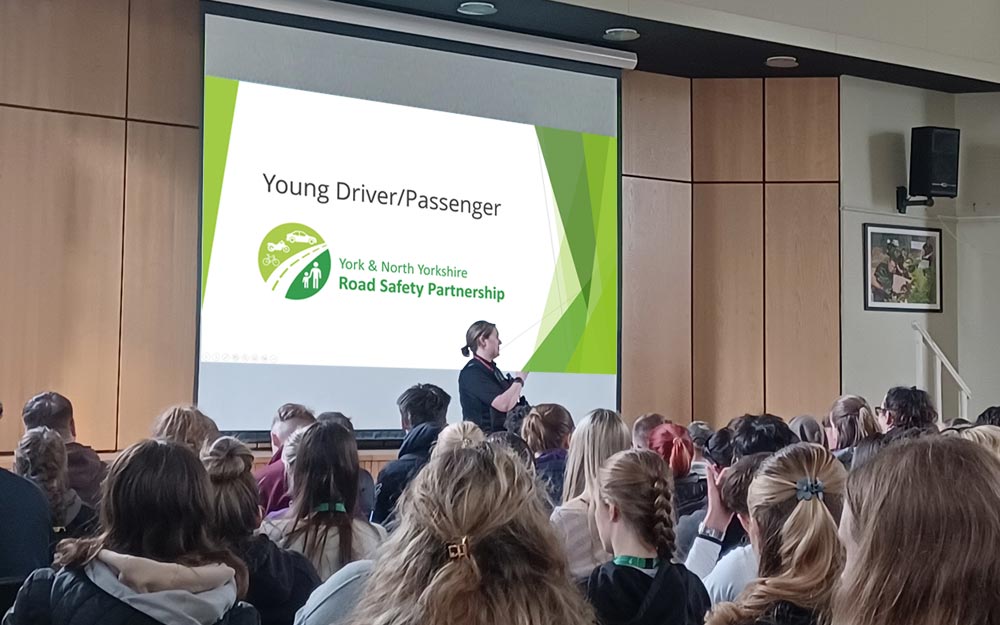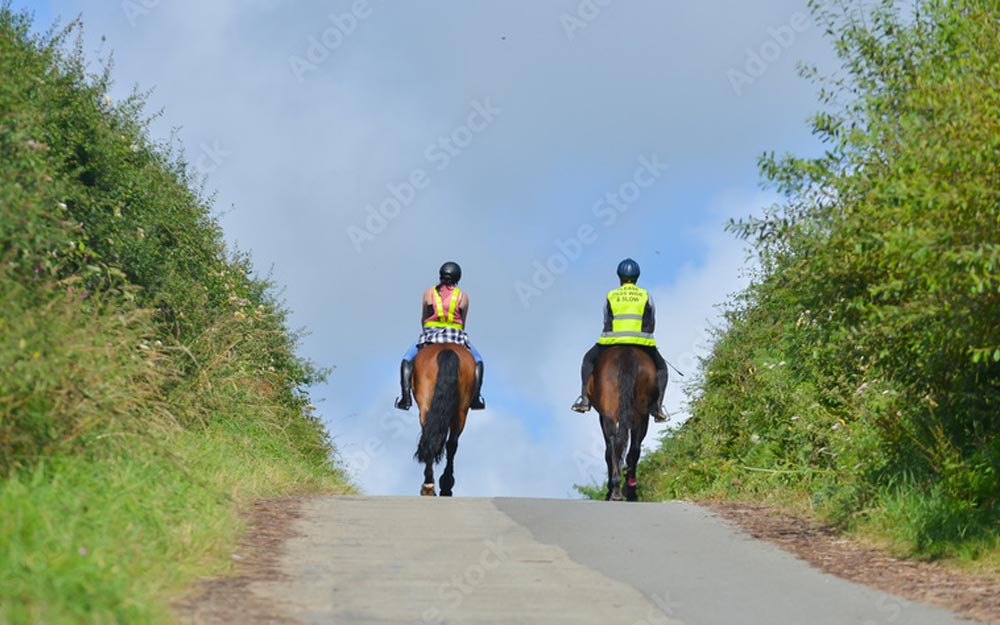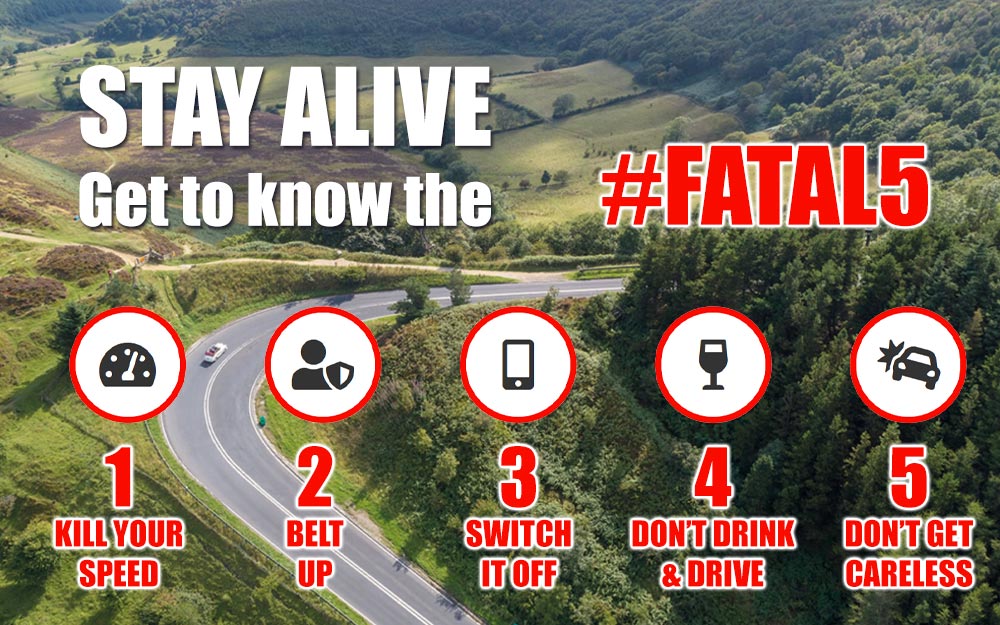Safer Roads Strategy
Strategic Priorities in York and North Yorkshire
This report presents an update on the York and North Yorkshire Road Safety Partnership’s 2024 Action Plan.
The York and North Yorkshire Road Safety Partnership is made up of local authorities, emergency services and other agencies who work together with the aim of lowering the number of road casualties across York and North Yorkshire.
Roads are essential to our everyday lives, for business and leisure. Our roads are busier than they have ever been so, with over 6,000 miles of roads across our City and County, road safety has never been more important.
Our Vision
By working ‘Towards Vision Zero’, we aim to reduce the number of those who are killed or seriously injured on our roads and improve the safety of all road users in York and North Yorkshire.
Vision Zero
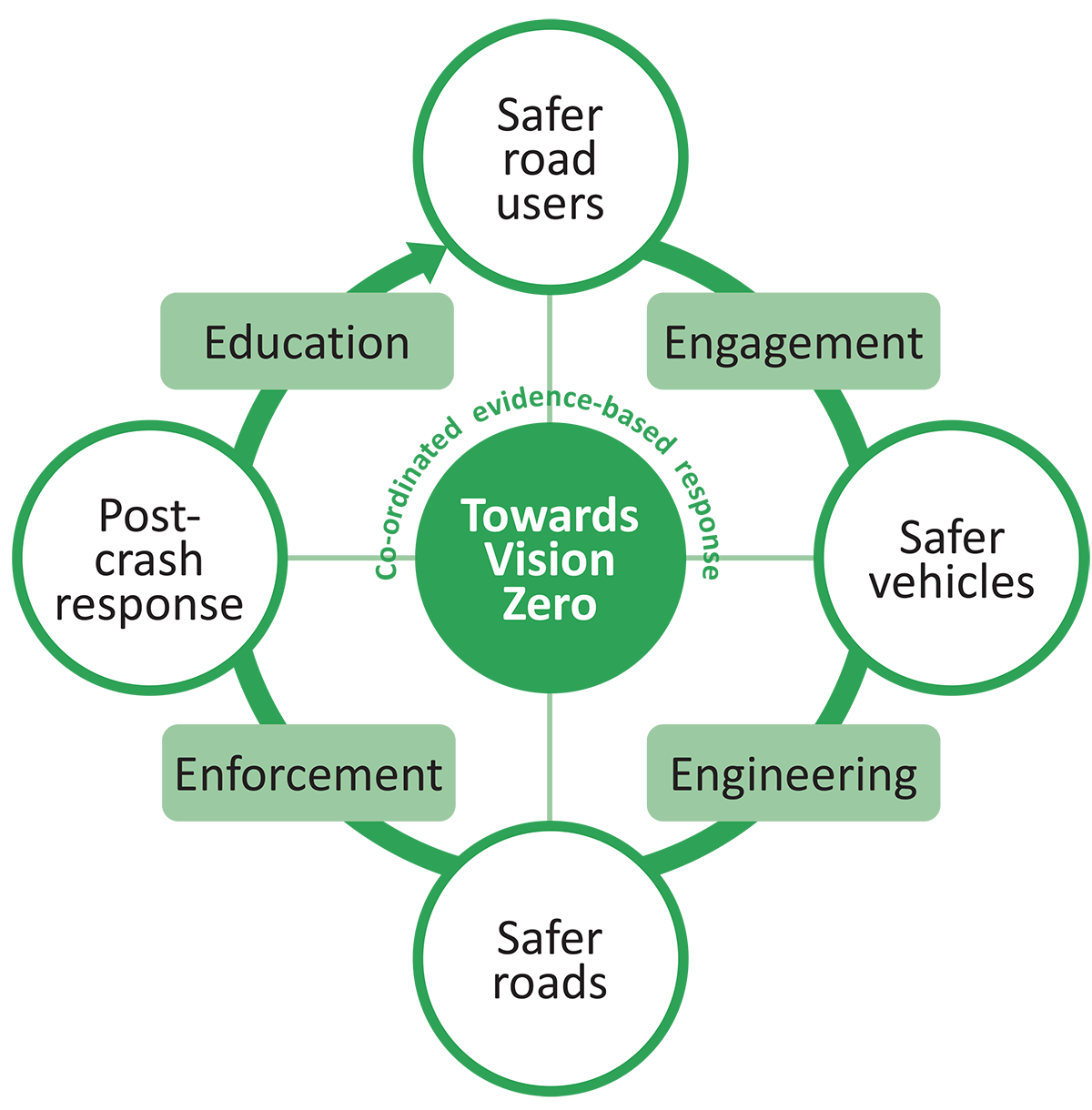
Our Goal
Our goal is to work towards Vision Zero and the reduction of road collision fatalities and serious injuries.
We believe that our goal will be achieved by coordinated and evidence-based education, engagement, engineering and enforcement activity, targeted at reducing the ‘fatal five’, which deliver against four strategic outcomes.
Education
- Develop a foundation level road safety awareness framework for delivery to children and young people across the county.
- Support members in coordinating activities that align with national road safety campaigns.
- Oversee and assess the delivery of educational activities by members to ensure maximum impact in reducing the most significant risks on the county’s roads.
- Publicise the outcomes of vehicles exceeding speed limits captured by Safety Camera Deployments, as well as the legal consequences of fatal and life-changing or life-threatening collisions that proceed to prosecution through partners’ media channels.
Engagement
- Assist members with engaging local communities to encourage sign-up to Community Speed Watch initiative and reviewed progress
- Coordinate engagement with the business community to promote road safety within their community, using the government’s Driving for Better Business programme.
- Engage with road victim support organisations to gather feedback and incorporate it into the Road Safety Partnership’s efforts.
- Establish connections with neighbouring counties’ road safety partnerships to share best practices and coordinate activities.
Engineering
- Examine the results of investigations into fatal and serious injury collisions on North Yorkshire’s roads to guide the partnership’s stance on infrastructure enhancements.
- Scrutinise infrastructure plans to ensure they accurately identify and reduce risks to road users.
- Assist partners and stakeholders in accessing external funding to facilitate the achievement of road safety objectives.
- Proactively endorse technological advancements that aim to decrease risks to road users.
Enforcement
- Determine which road users are most likely to commit offences that increase the risk for other road users, and support the implementation of focused enforcement measures to encourage them to modify their behaviour.
- Evaluate the efficacy of speed enforcement deployments to determine the most effective measures for reducing risk on our county’s roads.
- Endorse the ongoing provision of driver awareness courses as a means of encouraging behavioural change, and evaluate their effectiveness.
- Facilitate and assess enforcement campaigns in collaboration with partners to ensure that they work together in achieving desired outcomes for reducing the highest risks on the county’s roads.
The Fatal 5
Road users who commit one of the fatal five offences are far more likely to be involved in a fatal collision than those who do not. The partnership will focus activity within these priority areas to address the fatal five aspects that dominate road traffic collisions.
Inappropriate or excessive speed
Not wearing a seat belt
Driver distractions (including using mobile devices such as phones, ‘sat navs’ and tablets)
Driving under the influence of alcohol or drugs
Careless and inconsiderate driving
Nearly all road deaths and injuries are preventable!
Safe System Approach
The partnership has agreed to the principles of the Safe System approach and will shape a strategic outcomes framework around its four pillars:
Safer Road Users
Our Outcomes
- More confident road users who understand and recognise risks, especially the fatal five and know the highway code and how to safely use roads and stay safer.
- Improved targeted, coordinated and evidence based delivery of road safety awareness campaigns which reach out to York and North Yorkshire Road users and encourages positive and safe behaviours.
- Skilled road users who choose to use an appropriate mode of travel, act safely and within the law and seek to improve road experiences for themselves and others.
- Delivery of road safety enforcement and perception of safety are improved which reduce the fatal five behaviour.
Target user groups:
Young road users: first steps to greater safety
Road safety skills are vital for young people of all ages, both for their own wellbeing and for that of others. What we learn, what we are exposed to and how we behave at a young age can remain with us all our lives.
Young adults: dealing with growing independence
Once children reach young adulthood with greater mobility and freedom, their exposure to risk, alongside under-developed awareness of danger and consequence leads to a higher likelihood of acting on impulse and peer pressure. The early years behind the wheel are the most risky, and too many young drivers and passengers are overrepresented in collision and casualty statistics.
Adults: staying within the law
Adults need to put all the “road safe” learning from younger years into practice staying legal and safe on the road. Continued learning to improve skills and to create positive role models to other easily influenced road users is essential.
Third-age adults
Older road users’ knowledge, experience and skills can deteriorate with age, reduced on road activity and declining cognitive and physical capability. As the UK’s population ages, it is crucial that older people can maintain the skills and confidence required to remain safe and effective drivers.
Safer Motorcycles
Ensuring that motorcyclists are equipped with the specialist skills necessary in order to stay safe on the road, understanding the risks, increasing protection and improving behaviour.
Pedestrians, agricultural vehicles, cyclists and equestrian
Recognising the potential hazards on the roads and immediate environmental needs which extend beyond the person in a vehicle and wider road safety awareness. All those using the roads must take action to ensure their mode of travel has followed appropriate safety measures or safety checks have been made, e.g., bicycle safety checks prior to travel and ensuring high visibility is displayed on the journey.
Safer Vehicles
Our Outcomes
- York and North Yorkshire residents understand the benefits of, and proactively choose, vehicles equipped with appropriate safety technology.
- Educated road users who understand the importance of vehicle safety, who service and maintain their vehicle regularly, who understand the roads and environment and make sure their vehicle is suitably equipped for the journey.
- More responsible business owners who equip their workforce with a safe and regularly checked fleet and ensure their staff are skilled in vehicle safety.
Target vehicles:
Fleets and people who drive for work
Employers can have a major role to play in improving safety on the roads through ensuring that their staff are properly prepared and motivated to drive and ride safely, and that they are using safe vehicles.
Safer Large Goods Vehicles
More than 10% of collisions involve Goods vehicles (third highest vehicles type). Improvements need to continue for the safety of Large Goods Vehicles to reduce collision involvement with vulnerable road users, predominantly cyclists and pedestrians, and with other vehicles as well.
Safer Motorcycles
Ensuring that motorcyclists are aware of the importance of well-equipped and maintained vehicles, particularly tyres, chains and breaks and that the use of safety features are utilised such as anti-lock brakes.
Automated Vehicles
The development of vehicle technologies such as automated breaking systems, vehicles connected to highway infrastructure regulating speed and ultimately fully automated vehicles is expected to reduce the incidents of vehicle collisions. The development of safer vehicles has had a significant, positive impact on crash survivability. Whilst road user behaviour accounts for most collisions, the Safe System ethos identifies the need to make crashes survivable.
Safer Roads
Our Outcomes
- Road engineering and signage that is appropriate to the road type and which reduces the risk of harm, assists road users to be confident on the roads and helps them to understand the risks.
- Reduction in traffic speed within the 20mph speed limit areas.
- Reduction in criminal and anti-social use of York and North Yorkshire road network in partnership with bordering agencies.
- Improved information sharing with one partnership data repository to gather and analyse road safety data which directs activities in high-risk hotspot locations and is used to respond to road safety complaints and concerns.
- Coordinated and engaged Community Speed Watch Schemes and members who feel part of the wider Safer Roads Partnership delivery.
- Planning, designing and delivery of walking and cycling infrastructure is improved which assists in making active travel safer and more attractive.
- Identifying and addressing collision cluster sites, where funding is available, to reduce the recurrence of collisions at these locations.
Target Road Types:
Rural Roads
A high number of fatalities on our roads occur on rural roads, particularly among young car drivers and passengers aged 16-24 years.
The Strategic Road Network
England’s Strategic Road Network (SRN) such as A1, A19, and A64 in York and North Yorkshire has some of the safest of all roads in the UK, but there is still the need to continue to improve safety on them through the introduction of physical improvements. Driver behaviour changes will be addressed through campaigns and engagement work under Safer Road Users and Safer Vehicles.
Urban areas and the environment
Inappropriate speed is an important factor in some collisions and influences the severity of injuries sustained in collisions. There is a public concern about the effects of speed and safety and by addressing collision cluster sites, the risk of further collisions is reduced.
Post Crash Response
Our Outcomes
- Enhanced coordinated partnership activity that reduces the number of those killed and seriously injured on the roads of York and North Yorkshire, keeping communities safe as they travel across our road network.
- Ensure that all districts offer equally high standards of rescue, hospital care and long-term rehabilitation following a serious road collision.
- Understanding the causes of serious collisions to prevent or reduce their reoccurrence.
- Ensuring that when there is a serious collision the response from emergency services ensures that the risk of further collisions is minimised.
Targeted Response:
Victims
Those who have been affected by road collisions, the injuries or fatalities that have resulted from these, shows the often devastating and sometimes long term impact it has on the victim and their families.
Community
Local communities or specific road user groups are impacted by any KSI collisions and often feel the need to take action to make a positive change.
Vulnerable Groups
Initial analysis shows Motorcycles formed 7% of traffic but account for 26% of KSI casualties over the past 5 years. Effective targeted action with enforcement and support of road safety in area such as Craven, where there were high numbers of motorcycle collisions with a proactive and highly visible approach by the partnership resulted in a decrease in the number of incidents. Biker down training would be helpful to ensuring motorcyclists have the skills that enable them to manage injuries in the event of a collision while waiting for emergency services.
Latest Information for Road Users






